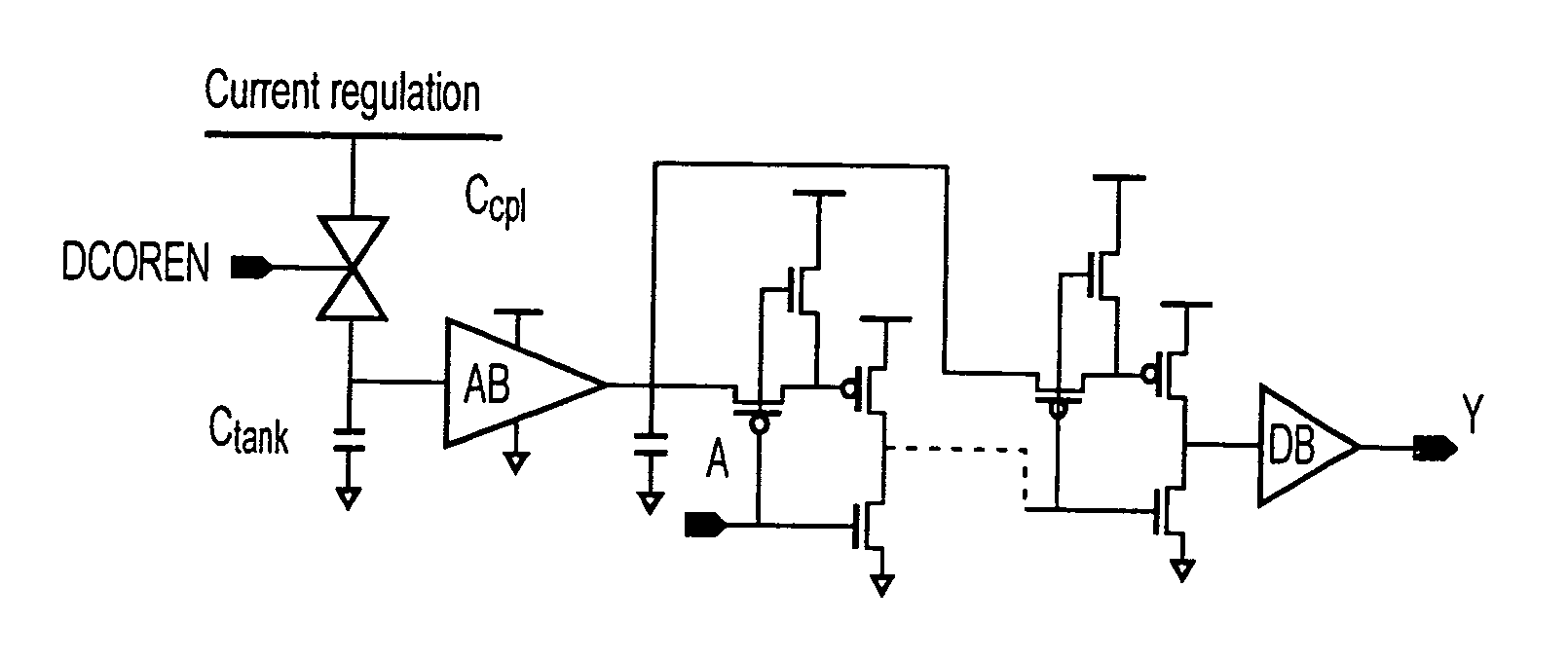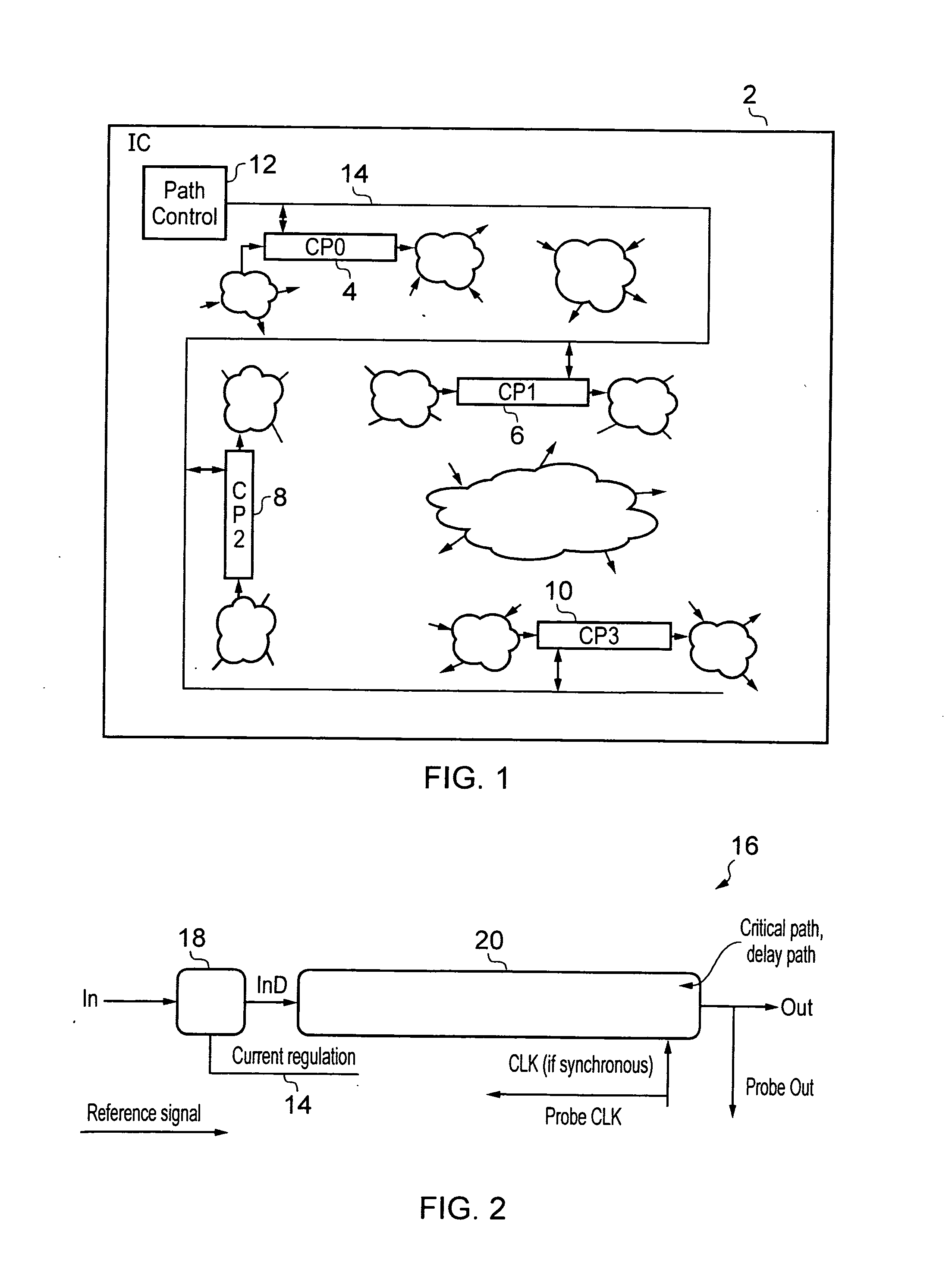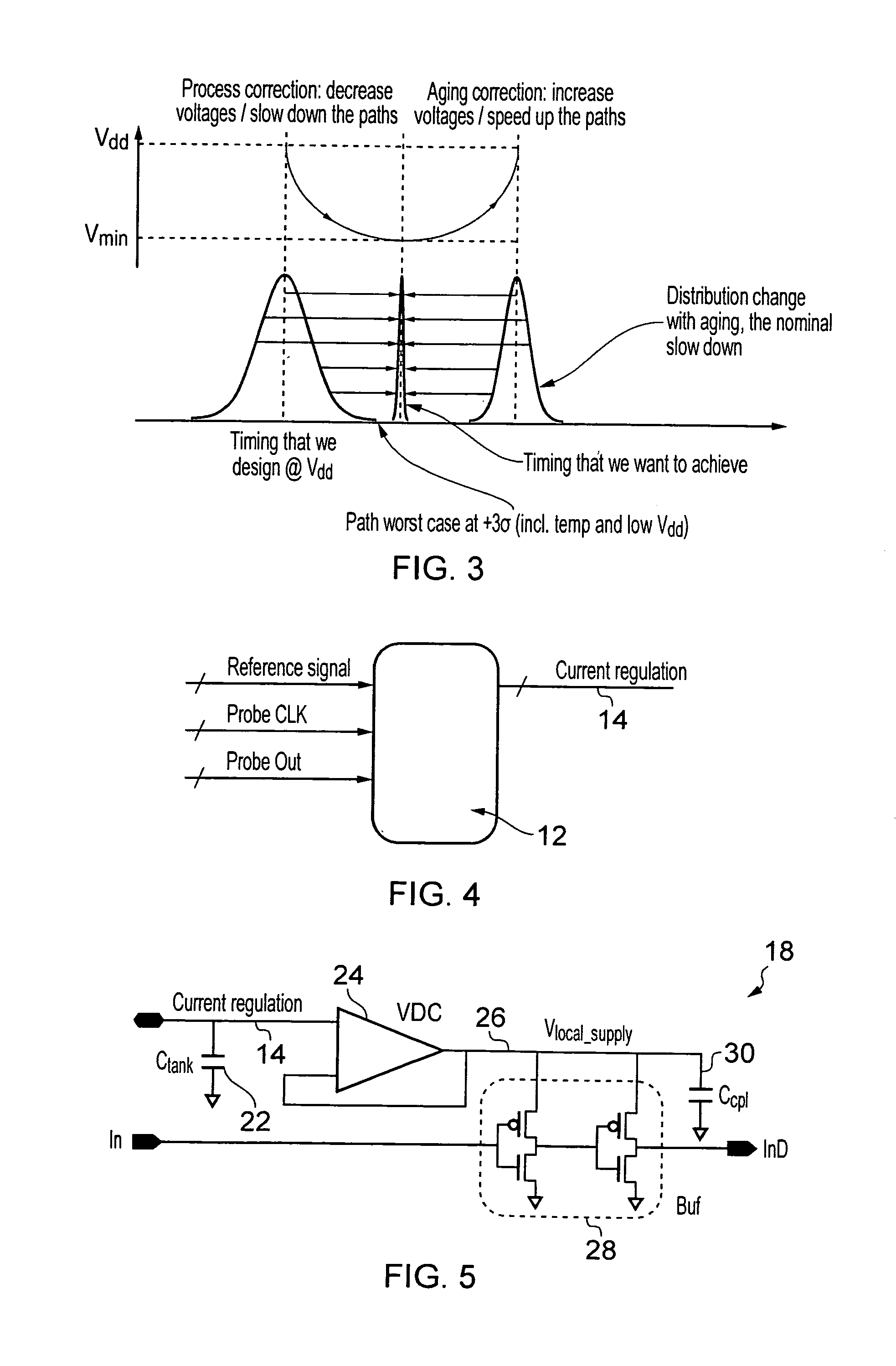Integrated circuit with timing adjustment mechanism
a timing adjustment mechanism and integrated circuit technology, applied in the direction of specific program execution arrangements, multi-port active networks, program control, etc., can solve the problems of inability to operate correctly, critical paths operating either too quickly or too slowly, and the integrated circuit concerned cannot function correctly, so as to reduce the overhead associated with the present technique and improve the robustness of the control of the variable delay circuitry
- Summary
- Abstract
- Description
- Claims
- Application Information
AI Technical Summary
Benefits of technology
Problems solved by technology
Method used
Image
Examples
Embodiment Construction
[0049]FIG. 1 schematically illustrates an integrated circuit 2 including processing circuitry for performing processing operations. This processing circuitry includes critical path circuits 4, 6, 8, 10 which each perform part of functional data processing operations of the integrated circuit. The critical path circuits 4, 6, 8, 10 may, for example, be timing paths used to generate self-timing signals within a memory circuit. Many other different forms of critical path circuit are also possible and the present techniques may be used with these different forms of critical path circuit.
[0050]Path control circuitry 12 is coupled via a regulated current line 14 to each of the critical path circuits 4, 6, 8, 10. This regulated current line 14 is used to adjust an additional time delay that is part of the path delay of each of the critical path circuits 4, 6, 8, 10 and is provided by variable delay circuitry disposed within those critical path circuits 4, 6, 8, 10. Individual regulated cur...
PUM
 Login to View More
Login to View More Abstract
Description
Claims
Application Information
 Login to View More
Login to View More - R&D
- Intellectual Property
- Life Sciences
- Materials
- Tech Scout
- Unparalleled Data Quality
- Higher Quality Content
- 60% Fewer Hallucinations
Browse by: Latest US Patents, China's latest patents, Technical Efficacy Thesaurus, Application Domain, Technology Topic, Popular Technical Reports.
© 2025 PatSnap. All rights reserved.Legal|Privacy policy|Modern Slavery Act Transparency Statement|Sitemap|About US| Contact US: help@patsnap.com



